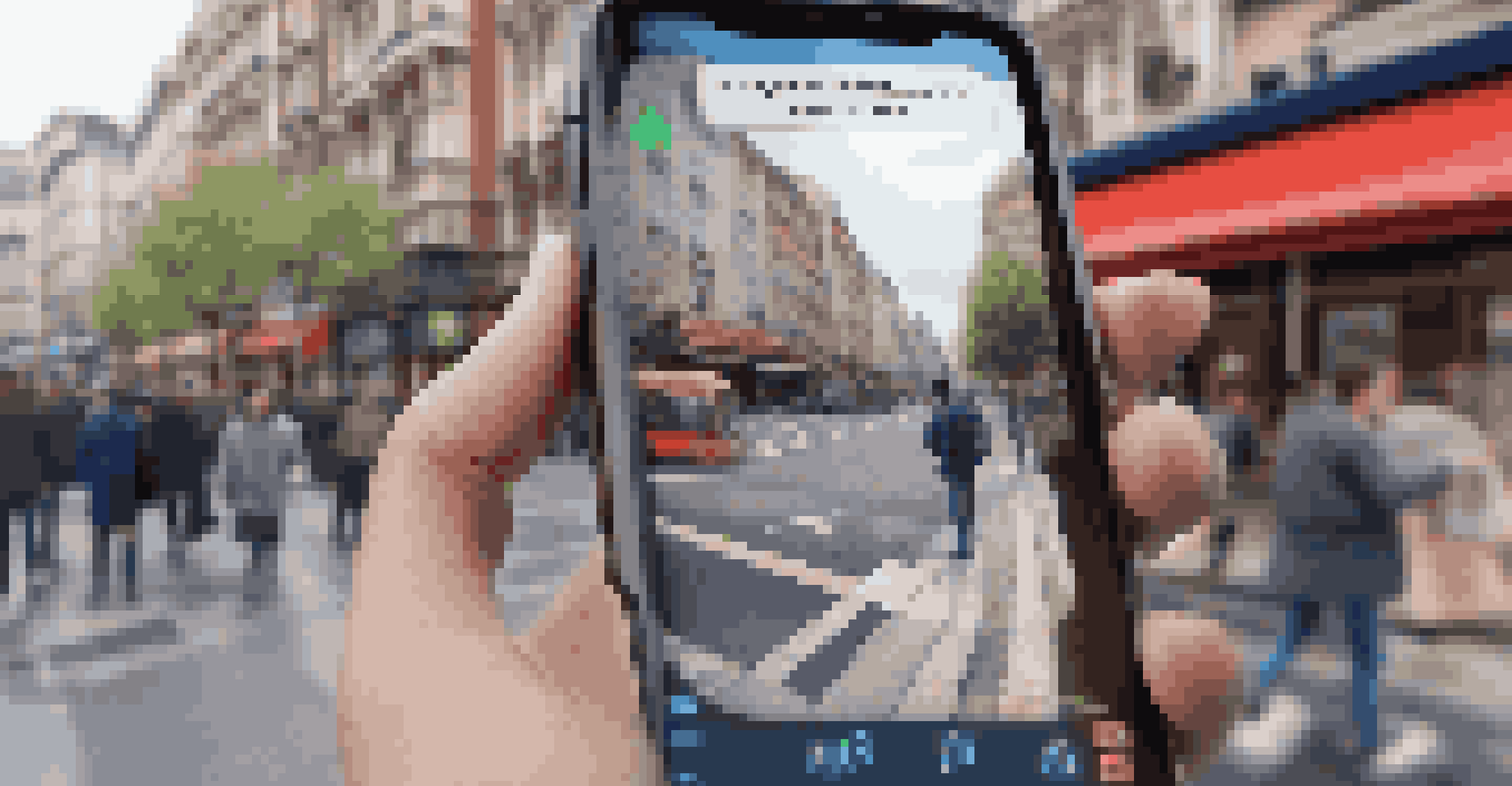Integrating AR into Language Learning: A New Methodology

Understanding Augmented Reality in Education
Augmented Reality (AR) blends digital elements with the real world, creating immersive experiences. In education, this technology enhances learning by making lessons more interactive and engaging. Imagine students practicing a new language while interacting with virtual objects in real time, making the learning process not just informative but also exciting.
Technology will not replace teachers, but teachers who use technology will replace those who don't.
For instance, while learning vocabulary, students could see 3D models of objects they are studying, helping them to connect words with visual representations. This approach caters to different learning styles, ensuring that visual learners can grasp concepts more effectively. Overall, AR serves as a bridge between theoretical knowledge and practical application.
As AR technology evolves, its integration into language learning promises to transform traditional methods. By providing contextual learning opportunities, it prepares students to use their language skills in real-world situations. Embracing AR in education could very well be the next big step in modern teaching methodologies.
Benefits of AR in Language Learning
The primary benefit of AR in language learning is its ability to create an engaging environment. Students are more likely to retain information when they can interact with it. For example, by using an AR app, a student might practice ordering food in a virtual restaurant, allowing them to rehearse real-life scenarios.

Moreover, AR can help break down language barriers by providing instant feedback. Learners can simply point their devices at objects to hear the correct pronunciation, which builds confidence and aids in mastering difficult sounds. This immediate reinforcement is crucial for language acquisition.
AR Enhances Interactive Learning
Augmented Reality transforms education by making lessons more engaging and interactive, allowing students to connect theoretical knowledge with practical application.
Lastly, AR fosters collaboration among students. Working together on AR projects encourages communication in the target language, enhancing both speaking and listening skills. With the right tools, language learning becomes a communal experience, making it both fun and effective.
Examples of AR Tools for Language Learners
Several AR tools are already making waves in language education. Apps like Google Translate offer an AR feature that allows users to translate text in real time simply by pointing their camera at it. This functionality not only aids comprehension but also encourages learners to engage with their surroundings in the target language.
The future is already here — it's just not very evenly distributed.
Another innovative tool is Mondly, which uses AR to create immersive language experiences. Users can practice conversations with virtual characters, enhancing their speaking skills in a pressure-free environment. This method mimics real-life interactions, helping students feel more prepared for actual conversations.
These examples illustrate how AR can be seamlessly integrated into language learning. By providing dynamic interactions and practical usage scenarios, these tools help learners build confidence and proficiency in their new language.
Challenges in Implementing AR in Language Learning
While the benefits of AR are clear, there are challenges to consider. One significant hurdle is the technology barrier, as not all students have access to AR-capable devices. This disparity can create inequalities in learning opportunities, potentially leaving some students behind.
Another challenge is the need for proper training for educators. Teachers must not only understand how to use AR tools but also how to incorporate them effectively into their lesson plans. Without proper training, the potential of AR may go untapped, leading to frustration for both educators and students.
Overcoming Language Barriers
AR tools provide instant feedback and immersive experiences, helping language learners practice real-life scenarios and build confidence.
Lastly, creating relevant content that aligns with language learning objectives can be time-consuming. Developers need to focus on creating AR experiences that are not only engaging but also pedagogically sound. Balancing fun with educational value is key to successful AR integration.
The Role of Educators in AR Integration
Educators play a crucial role in successfully integrating AR into language learning. They must serve as facilitators, guiding students through AR experiences while ensuring that the learning objectives are met. This requires a deep understanding of both the technology and the language being taught.
Furthermore, teachers can encourage student engagement by allowing them to explore AR tools creatively. For example, they might assign projects where students create their own AR content, fostering a sense of ownership and excitement about their learning. Such initiatives can transform passive learning into active exploration.
Ultimately, educators must be willing to adapt and evolve their teaching methods. By embracing AR, they can provide students with richer, more meaningful learning experiences that resonate beyond the classroom.
Future Trends: AR in Language Learning
As technology continues to advance, the future of AR in language learning looks promising. We can expect to see more sophisticated applications that offer personalized learning experiences tailored to individual student needs. Imagine an AR app that adapts its challenges based on a student’s progress, ensuring optimal learning outcomes.
Moreover, the integration of artificial intelligence (AI) with AR could further enhance language learning. AI can analyze student performance and provide real-time suggestions for improvement, creating a more customized and effective learning environment. This combination holds immense potential for transforming how we approach language acquisition.
Challenges in AR Adoption
Despite its benefits, the integration of AR in language learning faces challenges such as technology access, teacher training, and content development.
Lastly, the global nature of language learning will benefit from AR's ability to connect learners from different backgrounds. Virtual exchange programs powered by AR could allow students from around the world to practice languages together, fostering cultural understanding while honing their skills.
Conclusion: Embracing AR for Language Learning
Integrating AR into language learning is not just a trend; it's a transformative approach that can greatly enhance educational experiences. By making learning interactive and engaging, AR helps students connect with the language on a deeper level. The immersive nature of AR fosters both retention and application, crucial elements for mastering a new language.
However, for AR to be effective, educators must embrace it with proper training and resources. As they adapt their teaching methods, they can unlock the full potential of AR tools, creating enriching environments for their students. Collaboration and innovation will be essential as both learners and educators navigate this new landscape.

In summary, the future of language learning is bright with the integration of AR. By embracing this technology, we can cultivate a generation of language learners who are not only fluent but also culturally aware and confident in their skills.